How Many Positions in Baseball: Infield & Outfield Positions
Baseball, often dubbed as America’s favorite pastime, is a sport that enthralls millions worldwide with its blend of strategy, skill, and athleticism. One fascinating aspect of baseball lies in its array of positions, each with its own distinct role on the field. From the pitcher, who delivers the ball with precision and power, to the outfielders, who chase down fly balls with agility and speed, baseball offers a diverse range of positions for players to excel in. Comprehending the distinct roles and duties of each position is crucial for both players and spectators. Let’s examine the individual traits of each position and uncover the reasons behind baseball’s lasting appeal.
List of Baseball Positions
Position
- Pitcher
- Catcher
- First Baseman
- Second Baseman
- Third Baseman
- Shortstop
- Left Fielder
- Center Fielder
- Right Fielder
Baseball Positions and Roles – Explained for Beginners
Pitcher
- Location: The pitcher’s mound, at the center of the baseball infield.
- Responsibilities: The pitcher throws pitches to the catcher, attempting to prevent the batter from hitting the ball.
- Strategies: Pitchers use different pitches, such as fastballs, curveballs, and change-ups, to keep the batter guessing and to control the game’s pace.
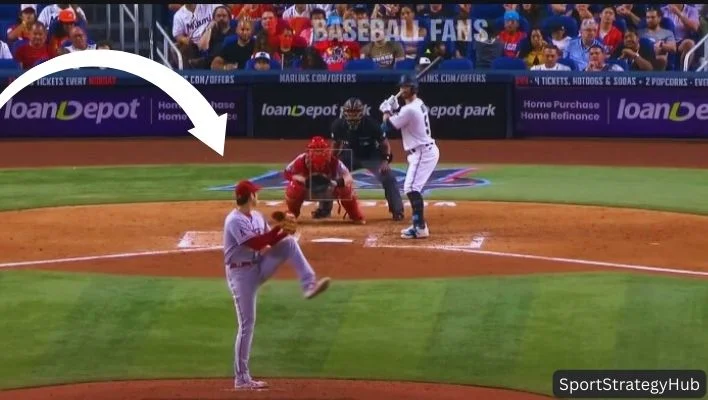
Catcher
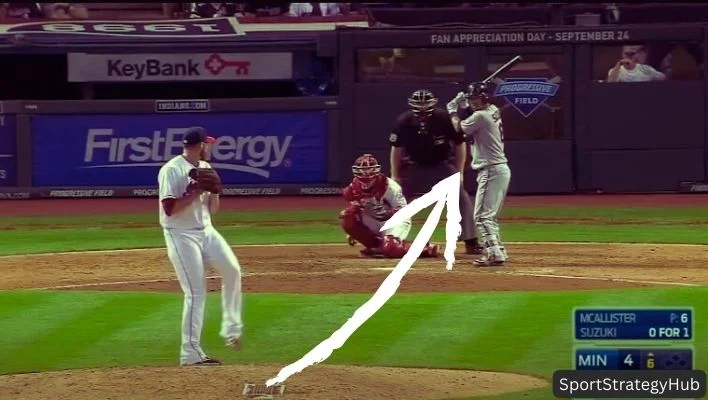
- Location: Behind home plate.
- Responsibilities: The catcher catches the pitches thrown by the pitcher and plays a vital role in directing the team’s defense. They communicate with the pitcher, call pitches, and make defensive plays.
First Baseman
- Location: Next to first base.
- Responsibilities: The first baseman catches balls thrown by other infielders in order to tag out runners at first base. They also contribute to defensive plays around the base.
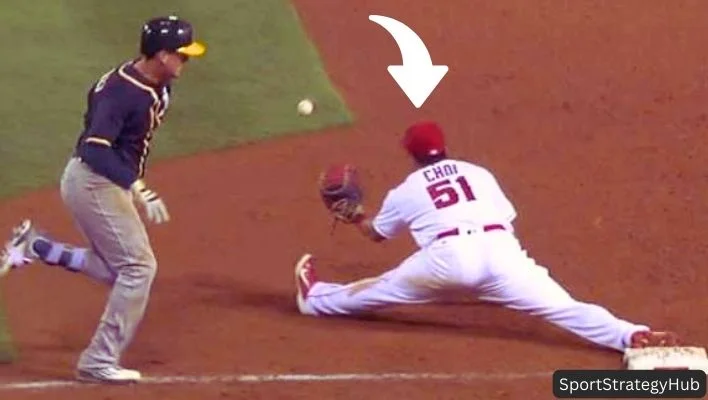
Second Baseman
- Location: Between first and second base.
- Responsibilities: The second baseman fields ground balls, gets runners out at second base, and covers second base during steal attempts.
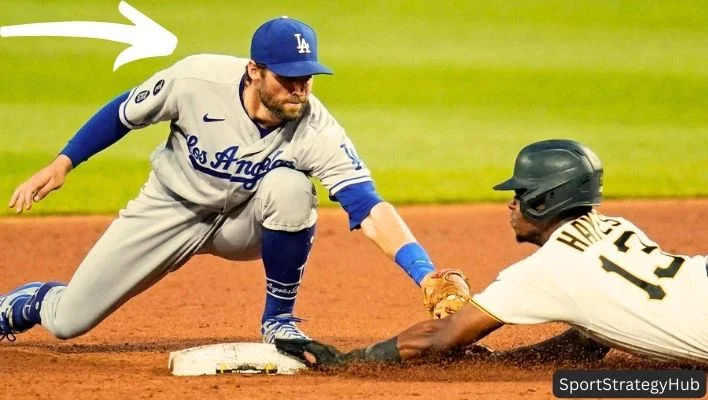
Third Baseman
- Location: Near third base.
- Responsibilities: Known as the “hot corner,” the third baseman covers third base, fields ground balls, and participates in defensive plays around the base.
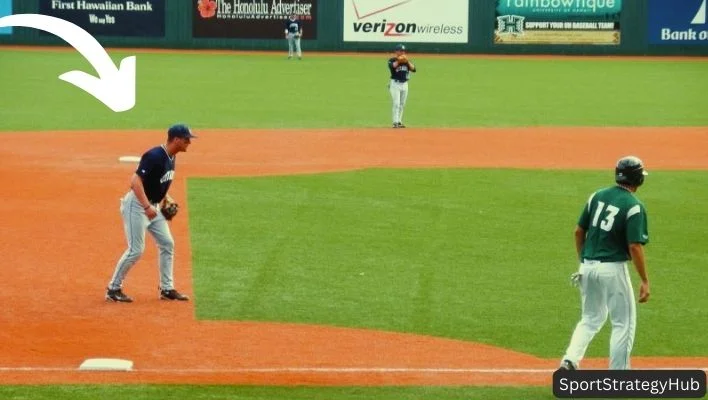
Shortstop
- Location: Between second and third base.
- Responsibilities: The shortstop often leads the infield. They field ground balls, catch throws from the outfield, and cover second base in specific situations.
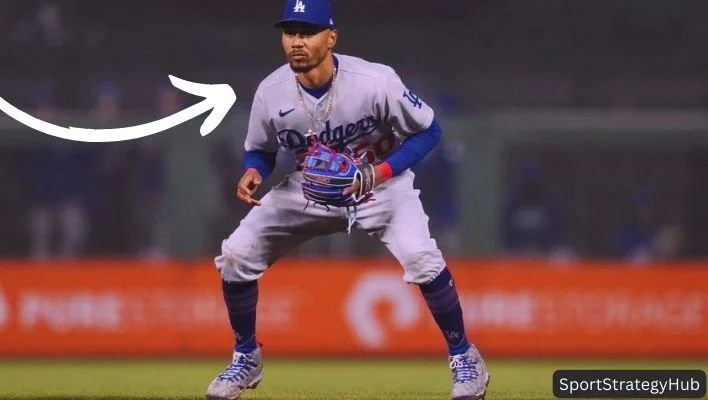
Left Fielder
- Location: Left field, between second and third base.
- Responsibilities: The left fielder catches fly balls and acts as the final defensive player in the outfield.

Center Fielder
- Location: Center of the outfield, behind second base.
- Responsibilities: The center fielder is considered the most important outfielder. They catch fly balls, cover a wide range of the outfield, and participate in defensive plays.
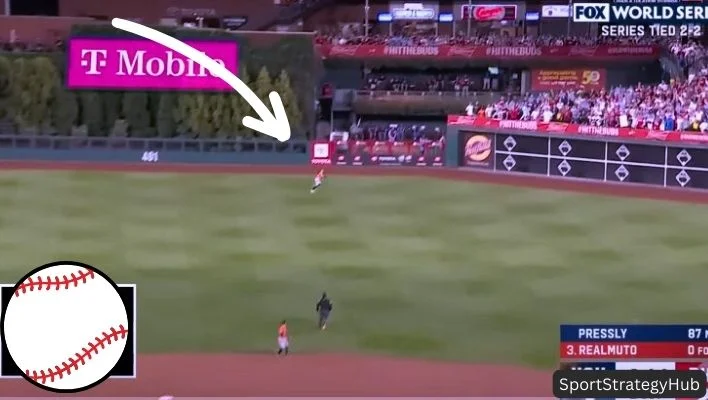
Right Fielder
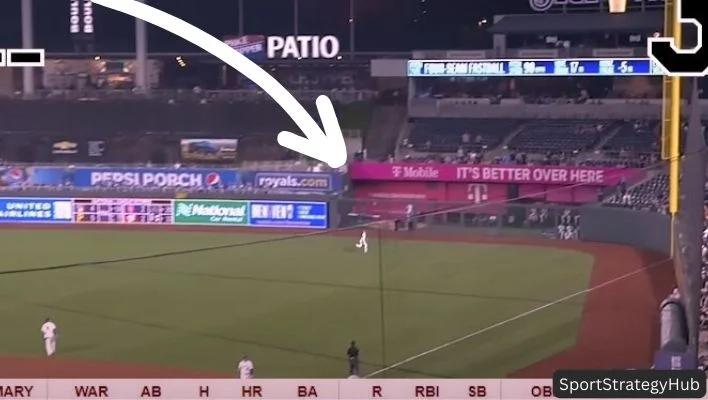
- Location: Right field, between first and second base.
- Responsibilities: The right fielder often has a strong throwing arm and catches fly balls hit to right field. They may also throw out runners trying to reach third base or home plate.
Baseball Infield and Outfield Positions and Responsibilities
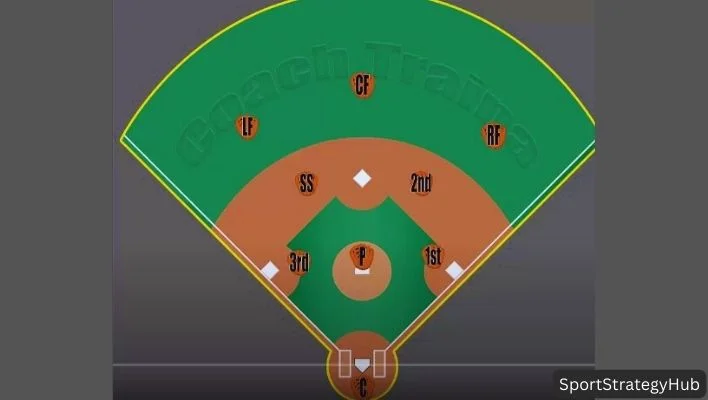
In baseball, the positions can be divided into two main categories: infielders and outfielders. Infielders are players stationed within the infield, the dirt area containing the bases. They operate nearer to the action and participate in numerous defensive plays.
Infield
The infield positions consist of the first baseman, second baseman, shortstop, and third baseman. Each position has its specific responsibilities and requires different skills. For instance, the first baseman must catch balls thrown to them to put out runners at first base. The second baseman and shortstop are responsible for fielding ground balls, making plays at second base, and covering the base during steal attempts. The third baseman, known as the “hot corner,” needs to have quick reflexes and strong defensive skills.
Outfielders
Conversely, outfielders occupy the outfield, the grassy area beyond the infield. They’re tasked with catching fly balls and covering a broader field area. The outfield positions include the left fielder, center fielder, and right fielder. Each outfielder has a specific territory to cover, and their role is crucial in preventing hits and making defensive plays.
Center Fielder
The center fielder is often seen as the most crucial outfielder, requiring outstanding speed and agility to cover a vast outfield area. Meanwhile, the left fielder and right fielder must possess strong throwing arms to make precise throws to the bases and stop runners from advancing.
The Number Assigned for Each Position
| Position | Number |
|---|---|
| Pitcher | 1 |
| Catcher | 2 |
| First Baseman | 3 |
| Second Baseman | 4 |
| Third Baseman | 5 |
| Shortstop | 6 |
| Left Fielder | 7 |
| Center Fielder | 8 |
| Right Fielder | 9 |
The Famous Players in Each Position
| Position | Famous Players |
|---|---|
| Pitcher | Nolan Ryan, Sandy Koufax |
| Catcher | Johnny Bench, Yogi Berra |
| First Baseman | Lou Gehrig, Albert Pujols |
| Second Baseman | Roberto Alomar, Ryne Sandberg |
| Third Baseman | Mike Schmidt, Brooks Robinson |
| Shortstop | Derek Jeter, Cal Ripken Jr |
| Left Fielder | Ted Williams, Barry Bonds |
| Center Fielder | Willie Mays, Ken Griffey Jr |
| Right Fielder | Babe Ruth, Hank Aaron |
Common Mistakes Made By Players & Parents in Choosing a Position
Choosing the right position in baseball can be a challenging decision for players and parents. Here are three common mistakes to avoid: aspiring to excel in a position that isn’t a good fit, being too rigid about a position, and playing too many positions without specializing.
Common Mistakes Made By Players & Parents Selecting a Position Choosing the appropriate position in baseball can pose a tough decision for both players and parents. Here are three common mistakes to avoid: aspiring to excel in a position that isn’t a good fit, being too rigid about a position, and playing too many positions without specializing.
Mistake 1: Aspiring to excel in a position that just isn’t a good fit
Players and parents often have dreams of excelling in a specific position, but it’s crucial to assess whether that position aligns with the player’s natural abilities and attributes. Each position requires different skills and strengths, so it’s essential to find the right fit to maximize potential and enjoyment in the game.
Mistake 2: Being too rigid about position
While it’s important to have a preferred position, being open to trying different roles can lead to new opportunities and growth. Sometimes, players discover that they excel in unexpected positions. Embracing flexibility allows players to contribute to the team’s success and develop a well-rounded skill set.
Mistake 3: Playing too many positions
While versatility is valuable, playing too many positions can hinder skill development and prevent players from mastering a specific role. Focusing on one or two positions allows players to refine their skills, gain expertise, and contribute more effectively to the team.
FAQs
The baseball position numbers are used for scoring and are crucial for identifying defensive plays. The numbers correspond to specific positions on the field, helping keep track of the game’s progress.
The player located behind home plate is the catcher. Their role is to catch the pitches thrown by the pitcher and play a vital role in directing the team’s defense.
Opinions may vary, but many consider the catcher position to be one of the most challenging in baseball. Catchers have demanding physical and mental responsibilities, requiring excellent reflexes, endurance, and game management skills.
The outfield position that typically has the strongest arm is the right fielder. They often need to make long throws to home plate or third base, requiring a powerful and accurate throwing arm. Q: Which position player is the fastest?
The center fielder is usually the fastest position player on the baseball field. They cover a significant amount of ground in the outfield, requiring speed and agility to track down fly balls and make defensive plays.
While every position presents its own set of challenges and duties, some might view first base as one of the less demanding positions in terms of defensive plays. However, every position requires skill and practice to excel.
Catchers are typically right-handed due to the advantage of their throwing arm being in a better position to make throws to second base and other bases during defensive plays.
Conclusion
In summary, baseball is a multifaceted sport with diverse positions, each holding a vital role in the game. Whether pitchers, catchers, infielders, or outfielders, comprehending the responsibilities and skills needed for each position is vital. By avoiding common mistakes in choosing positions and appreciating the unique contributions of legendary players in each role, both players and fans can gain a deeper appreciation for the game. Discover how many positions there are in baseball and find your perfect fit on the field.
